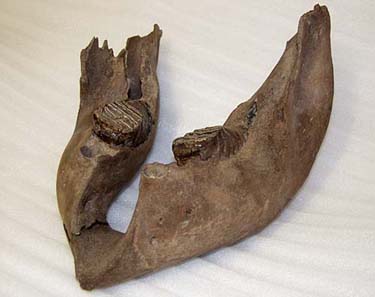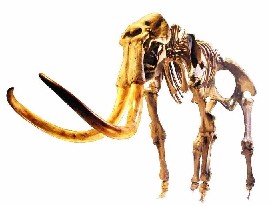Analysis of both the bones and the surrounding environment in Shropshire, England provide the most geologically recent evidence of woolly mammoths in western Europe, they say.
The mammoth bones, consisting of one largely complete adult male and at least four juveniles, were first excavated 27th September 1986 by mechanical digger operators, but the carbon dating which took place at the time has since been considered inaccurate. Technological advances during the past two decades now allow a more exact reading, which complements the ge ological data needed to place the bones into their environmental context. This included a study of the bones' decay, analysis of fossilised insects which were also found on the site, and a geological analysis of the surrounding sediment.
The research was carried out by professor Adrian Lister, based in the Palaeontology Research Division of the Natural History Museum in London, who has conducted numerous studies into 'extinction lag' where small pockets of a species have survived for thousands of years longer than conventionally thought.

Mandible of one of the mammoths. The teeth of mammoths are
composed of a set of thin enamel plates cemented together. A
mammoth has four teeth in its skull, one on each jaw, upper and
lower. Six sets of teeth will grow over the course of its life,
replacing worn out sets, and once the sixth set wears out the
mammoth will die. Credit: Shropshire
"Mammoths are conventionally believed to have become extinct in North Western Europe about 21,000 years ago during the main ice advance, known as the 'Last Glacial Maximum'" said Lister. "Our new radiocarbon dating of the Condover mammoths changes that, by showing that mammoths returned to Britain and survived until around 14,000 years ago."
As the Shropshire bones are the latest record of mammoths in North Western Europe they not only prove that the species survived for much longer than traditionally believed it also provides strong evidence to settle the debate as to whether mammoth extinction was caused by climate change or human hunting.

"The new dates of the mammoths' last appearance correlate very closely in time to climate changes when the open grassy habitat of the Ice Age was taken over by advancing forests, which provides a likely explanation for their disappearance," said Lister. "There were humans around during the time of the Condover mammoths, but no evidence of significant mammoth hunting."
Lister's findings are part of three papers on the Condover Mammoths which published in the Geological Journal. The other papers focus on the Palaeoenviromental context of the mammoths (Allen et al) and a geological study of the site in which the mammoths were discovered (Scourse et al).
References:
Lister.A, 'Late-glacial mammoth skeletons (Mammuthus primigenius) from Condover (Shropshire, UK): anatomy, pathology, taphonomy and chronological significance'. Geological Journal 2009 DOI: 10.1002/gj.1162
Allen.J.R.M, Scourse.JD, Hall,A.R, Coope G.R, Palaeoenviromental context of the Late-glacial woolly mammoth (Mammuthus primigenius) discoveries at Condover, Shropshire, UK'(pn/a) Geological Journal 2009 DOI:10.1002/gj1161
Scourse, Coope et al, 'Late-glacial remains of woolly mammoth Mammuthus primigenius) from Shropshire UK: stratigraphy, sedimentology and geochronology of the Condover site' (p n/a), Geological Journal, 2009 DOI:10.1002/gj.1163






Comments